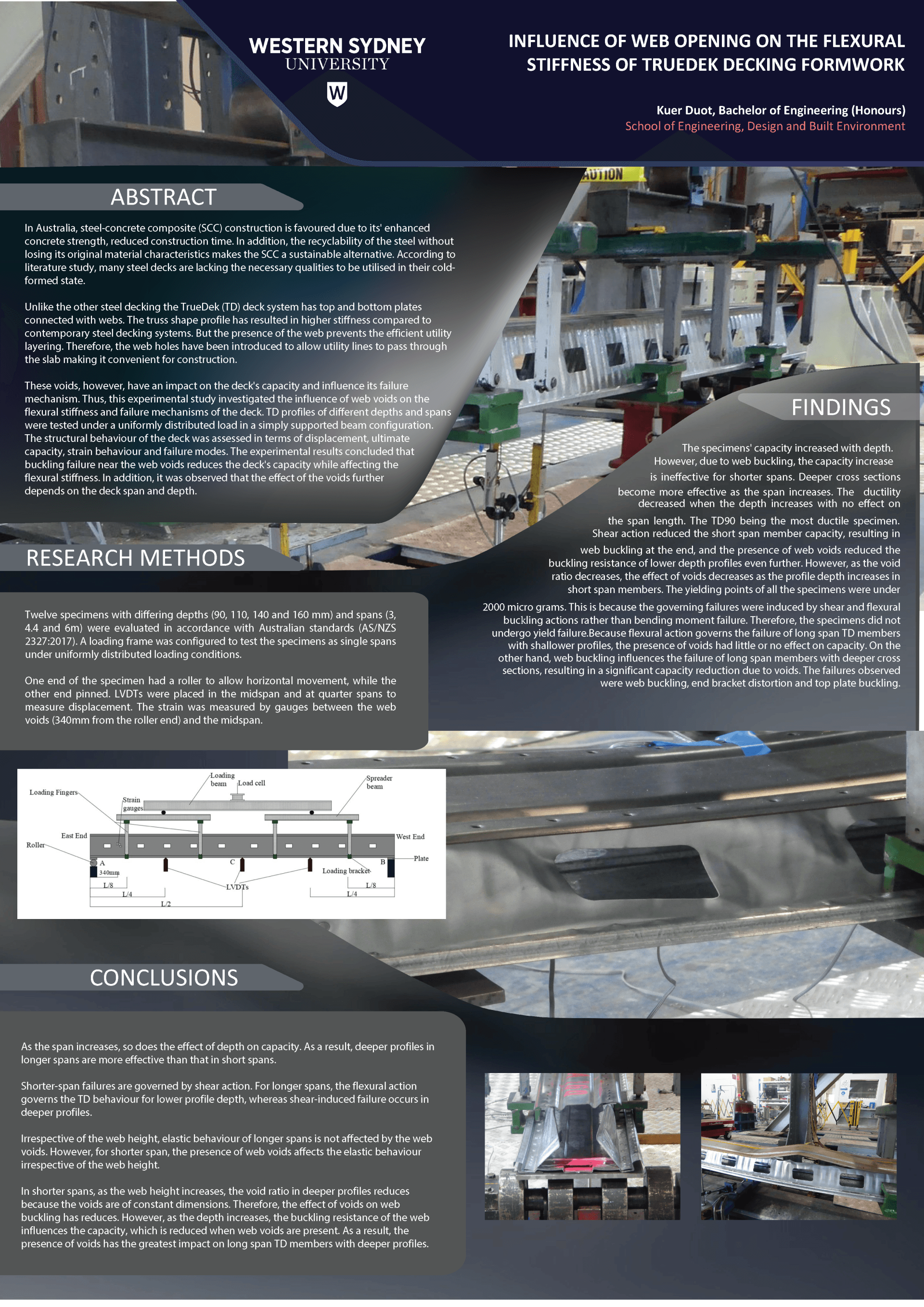
Kuer Duot
My passion for engineering stemmed from the curiosity of learning the working mechanisms of things. I'm in my final year of civil engineering, and this learning experience has expanded my ability to think critically. Being a project engineer would allow me to be directly involved in projects, which is what I aspire to be.
Influence of web opening on the flexural stiffness of Truedek decking formwork
In Australia, steel-concrete composite (SCC) construction is favoured due to its' enhanced concrete strength, reduced construction time. In addition, the recyclability of the steel without losing its original material characteristics makes the SCC a sustainable alternative. According to literature study, the majority of steel decks are lacking the necessary qualities to be utilised in their cold-formed state. Unlike the other steel decking the TrueDek (TD) deck system has top and bottom plates connected with webs. The truss shape profile has resulted in higher stiffness compared to contemporary steel decking systems. But the presence of the web prevents the efficient utility layering. Therefore, the web holes have been introduced to allow utility lines to pass through the slab making it convenient for construction. These voids, however, have an impact on the deck's capacity and influence its failure mechanism. Thus, this experimental study investigated the influence of web voids on the flexural stiffness and failure mechanisms of the deck. TD profiles of different depths and spans were tested under a uniformly distributed load in a simply supported beam configuration. The structural behaviour of the deck was assessed in terms of displacement, ultimate capacity, strain behaviour and failure modes. The experimental results concluded that buckling failure near the web voids reduces the deck's capacity while affecting the flexural stiffness. In addition, it was observed that the effect of the voids further depends on the deck span and depth.

